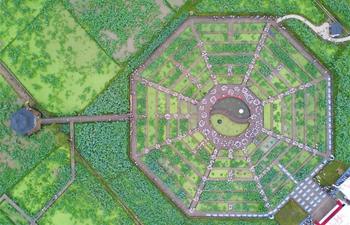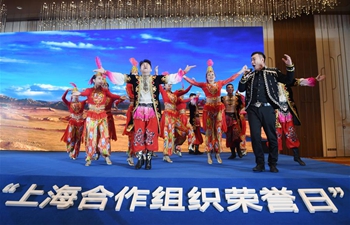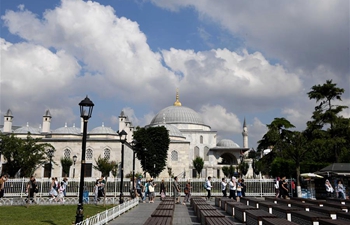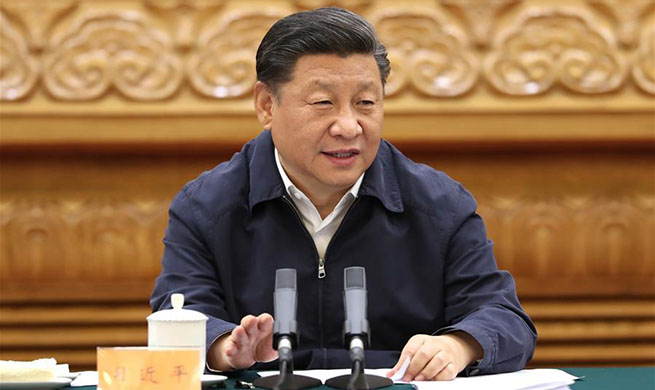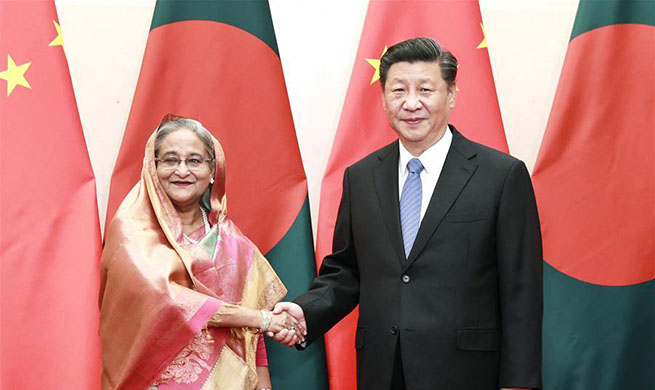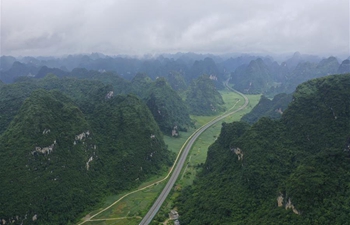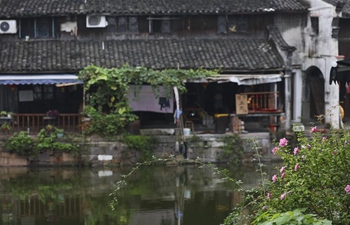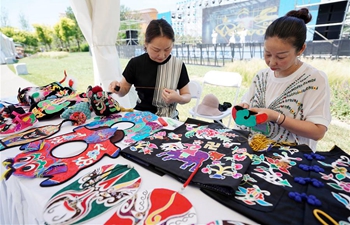By Xinhua writers Huang Haoran, Hu Chenhuan
NANCHANG, July 6 (Xinhua) -- Xiao Qingfu, 70, wearing a white uniform, slowly wiped the body of a blind and disabled old man with a towel in a dark room, filled with a strong smell from a leprocy-caused ulcer.
Xiao has been working as a doctor in Anbei leprosy recovery center in Yudu County, east China's Jiangxi Province, for 45 years. He has treated more than 300 leprosy patients and carried out over 100 surgeries.
After graduation from a nursing school in 1974, Xiao became a doctor in the recovery center. Known as a "leprosy village", the center had over 100 patients at that time.
"I was disturbed at the beginning," Xiao still remembers his feeling when he saw the patients' suppurate skin for the first time.
He did not fall asleep but sat still in a chair for a whole night on his first day in Anbei. "I was so afraid of getting infected that I dared not to touch the bed," he said.
During the first dozen of years, Xiao always wore a mask, a protective suit and even bundled up his shoes when he saw the patients, fearing for any infection.
In 1986, he was sent to a training program, where he gained more knowledge about leprosy. Knowing that the virus was not so easy to transfer, he took off the mask for the first time.
Xiao's home is in the county seat, about 20 km away from the Anbei center. He used to live in the center and would return home two to three times every month.
"At the beginning, some people would cover their noses and run away when they saw me," he said. "I also thought about leaving, but I could always feel their strong need for me."
One day in 1988, Xiao received a leprosy patient with serious adverse drug reactions. He made more than 30 phone calls asking for help from experts in other places.
The surgery was successful. When Xiao and his colleagues opened the door of the operation room, the patient's families suddenly knelt down, held his legs and cried.
"That memory has always been giving me the strength to carry on," Xiao said.
Over the past few decades, conditions in Anbei recovery center greatly improved. The local government built a five-story building in 2009 to replace the original adobe houses.
According to the local government, the prevalence rate of leprosy in Yudu County fell from 23.5 per 100,000 people in 1966 to 0.5 per 100,000 people currently. Now there are less than 40 patients in Anbei recovery center.
Xiao retired in 2011, but he continued with his work. He would visit the patients several times a week, checking their health and even bringing them some food and daily necessities.
On each new year eve, he would put up a red note on the door of his office, a traditional way for local people to wish for good fortune.
Statistics from the China Leprosy Association show that the country has 200,000 cured survivors and 3,000 symptomatic patients. During the past 70 years, a total of 500,000 leprosy patients were treated for free in China.





